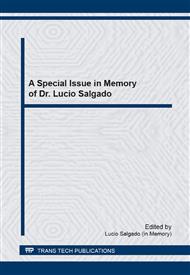p.508
p.513
p.519
p.525
p.530
p.536
p.541
p.547
p.553
Development of Ceramics Based on Clays from Different Regions in the State of Rio de Janeiro, Brazil
Abstract:
The state of Rio de Janeiro, southeast of Brazil, has two poles of conventional clay ceramic production, mainly bricks and roofing tiles. In the north region of the state, the county of Campos dos Goytacazes and in the state center, the county of Itaborai, present distinct types of clay. With the aim to improve some characteristics of the Campos dos Goytacazes clay, the objective of this work was to investigate different mixtures with the Itaborai clay. Samples were press-molded with compositions of 0, 25, 50 and 75 wt% of both clays. The samples were fired at 800°C and the technical properties related to plasticity, density, linear shrinkage, water absorption and flexural strength were determined. The results indicated that the superior performance of the Itaborai clay significantly improves that of the Campos dos Goytacazes clay for any incorporated percentage. The mechanisms and reasons for these results are discussed.
Info:
Periodical:
Pages:
530-535
Citation:
Online since:
September 2014
Price:
Сopyright:
© 2015 Trans Tech Publications Ltd. All Rights Reserved
Share:
Citation:


